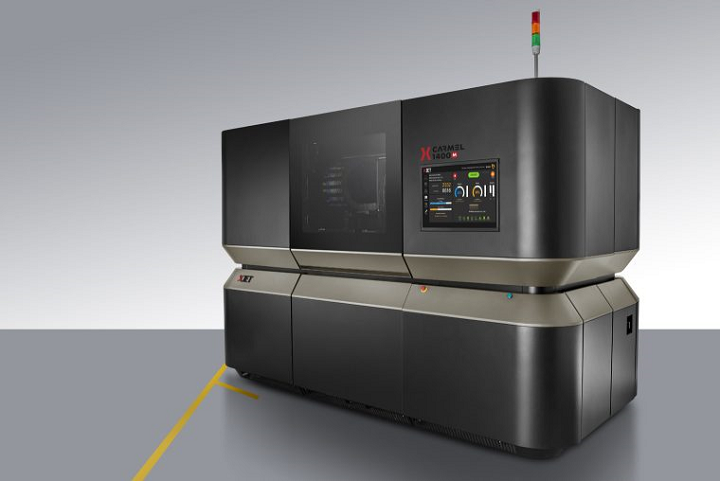In 2017, Israeli additive manufacturing solutions provider XJet announced a new inkjet method of 3D printing ceramics, based on its existing NanoParticle Jetting (NPJ) 3D printing technology. According to a recent SmarTech report, the ceramics 3D printing market should reach an estimated $4.8 billion in revenue by the year 2030, and has applications in several industries, including art, aerospace, medical, and dental. To that end, XJet has announced a new global partnership with Straumann Group, a leading dentistry company based in Switzerland.
“It’s incredible working with global leaders such as Straumann who are passionate and innovative about the products and services they provide,” XJet CBO Dror Danai said in a press release. “Working with them to move into production parts is hugely motivating and we’re delighted to see our partnership go from strength to strength.”
Straumann, well-known for improving dental patient care standards, creates, fabricates, and supplies a variety of products, using ceramic materials, for orthodontic, preventive, replacement, and restorative dental applications, including:
- biomaterials
- CAD/CAM prosthetics
- clear aligners
- dental implants
- digital equipment
- instruments
- software
The company is an early adopter of the material, and was actually one of the first to invest in XJet’s NPJ technology. Now, as part of this newly announced partnership, Straumann will employ the Carmel 1400 ceramics 3D printing system at its Basel headquarters, and work to move from concept to end-use parts.
“We’ve been working with XJet NanoParticle Jetting technology for some time, up to now it has been used for developing product iterations and providing proof of concept. Now we’re scoring the first product development project to reach the next level of bringing this technology to production of ceramic end-use parts,” explained Straumann VP Stephan Oehler. “We believe this technology can scale-up for production effectively, there’s a large print bed and with the soluble support material we find post-processing simple and efficient.”

Straumann will go from developing product concepts with its XJet Carmel AM System to the production of end-use parts. (Image: XJet)
Oehler explained that Straumann relies on XJet’s technology due to its reduced production cycles, easy-to-use soluble support material, and high part accuracy.
“We work with ceramic in a lot of our products, so when we learned there was a new technology in the field, we looked into it,” said Philippe Chavanne, Head New Technology Competence Center. “XJet convinced us with the quality of parts, the fine details and accuracy. In addition to that, the density of the material is extremely high, close to 100%, so it’s not like working with an ‘AM material’. We’re well-versed with the benefits of AM, so we knew that the freedom of design and complex geometries delivered by the technology, now for ceramic materials, could open up new product and application possibilities for the business.
“We were very impressed with the outstanding dedication and support provided by the XJet team, particularly Avi Cohen, Vice President, Healthcare and Education, who supported us in this collaboration from the very first moment.”
Even though the COVID-19 pandemic continues around the world, Straumann has kept the Carmel 1400 printer busy on the shop floor the whole time.

L-R: XJet CEO, Hanan Gothait, and Straumann VP, Stephan Oehler, cut the ribbon at the grand opening of XJet’s AM Centre (Image: XJet)
Oehler said, “There’s already a demand for the ceramic parts produced on the Carmel 1400, and social distancing is viable because operation of the system is very simple, so we’ve been able to keep the system running even through the global pandemic.”
Subscribe to Our Email Newsletter
Stay up-to-date on all the latest news from the 3D printing industry and receive information and offers from third party vendors.
You May Also Like
New Report: Semiconductor Industry to See $1.4B in 3D Printing Revenues by 2032
“The semiconductor sector has become the most strategically significant area of global industry.” Truer words are hard to come by when it comes to the modern world, and they are...
Will Photonic-Crystal Lasers Revolutionize 3D Printing?
Powder bed fusion (PBF) for metals and polymers predominantly utilizes lasers as the primary heat source. Some directed energy deposition (DED) technologies also employ lasers, while various vat polymerization methods...
3D Printing Unpeeled: Orbex Investment, IndoMIM and HP, Ultrasonic Waves
INDO-MIM has bought three HP Metal Jet S100 printers, operating two in India and one in Texas. This is a win for HP because the company has deep experience in...
3D Printing Webinar and Event Roundup: April 21, 2024
It’s another busy week of webinars and events, starting with Hannover Messe in Germany and continuing with Metalcasting Congress, Chinaplas, TechBlick’s Innovation Festival, and more. Stratasys continues its advanced training...
































